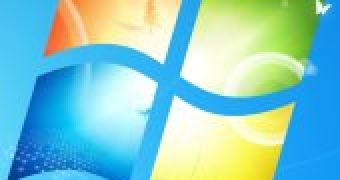Microsoft has made available for download new resources associated with the underlining graphics technology in its Windows operating system, including the latest version of the operating system. Windows 7 brought to the table DirectX 11, a technology which was also backported to Windows Vista SP2 via the Platform Update for Windows Vista. No less than three downloads were made available at the end of the past week by the Redmond company: the DirectX End-User Runtime Web Installer, the DirectX End-User Runtimes (February 2010), and DirectX Software Development Kit.
All three DirectX resources have been updated for the first time in 2010. “The Microsoft DirectX End-User Runtime provides updates to 9.0c and previous versions of DirectX — the core Windows technology that drives high-speed multimedia and games on the PC,” Microsoft stated. DirectX End-User Runtimes (February 2010) is “the DirectX end-user multi-languaged redistributable that developers can include with their product. This package is localized into Chinese (Simplified), Chinese (Traditional), Czech, Dutch, French, German, Italian, Japanese, Korean, Polish, Portuguese (Brazil), Russian, Swedish, and English,” the company added.
The core of the DirectX February 2010 update is without a doubt the software development kit Microsoft is offering developers to streamline the building of DirectX compliant applications. The SDK package contains tools, utilities, samples, documentation, as well as the runtime debug files for 64-bit (x64) and (32-bit) x86 Windows.
According to the software giant, the following improvements were introduced to the February 2010 release of the DirectX SDK:
“- PIX has much-improved support for analysis of programs that use Direct3D 11 features, including compute shaders, tessellation, and dynamic shader class linkage. PIX features such as pixel history, the shader debugger, the mesh viewer, frame counters, and screenshots now work for these Direct3D 11 programs.
- The new "Playback Device" control in the Events pane enables the user to force PIX Direct3D playback to use the REF device.
- Mesh viewer data can be exported to a CSV file by right-clicking the data tables displayed in the PreVS, PostVS, or PostGS views.
- The texture viewer now supports the following additional formats: DXGI_FORMAT_D24_UNORM_S8_UINT, DXGI_FORMAT_R24G8_TYPELESS, DXGI_FORMAT_BC1_UNORM_SRGB, DXGI_FORMAT_BC2_UNORM_SRGB, DXGI_FORMAT_BC3_UNORM_SRGB, and XNAMath C++ SIMD Math Library.
- A minor revision to the library (version 2.02), includes a number of customer-reported fixes, optimizations, and improvements. Included are notable fixes to XMStoreColor(), XMQuaternionRotationMatrix(), XMVectorATan2(), and XMVectorATan2Est().
Direct3D 11 Deployment - The Direct3D 11 Deployment for Game Developers article and D3D11InstallHelper Sample have been updated to include guidance for corporate network users in a locally managed Windows Server Update Services (WSUS) environment. For these developers, KB 971644 is not applicable and they should refer to KB 971512 instead.
Enhancements to Voice Reuse Scenarios - Implementation changes to simplify voice reuse were made to IXAudio2SourceVoice::FlushSourceBuffers, IXAudio2SourceVoice::SetSourceSamplingRate, and IXAudio2SourceVoice::Stop. These changes enable titles to minimize the performance cost of creating and destroying multiple voices during the game.
Reverb and Mixing Performance Optimizations - We have optimized the codepaths for several of the less common channel mixing scenarios for mixing within the audio graph.”
DirectX Software Development Kit is available for download here. DirectX End-User Runtime Web Installer is available for download here. DirectX End-User Runtimes (February 2010) is available for download here.

 14 DAY TRIAL //
14 DAY TRIAL //